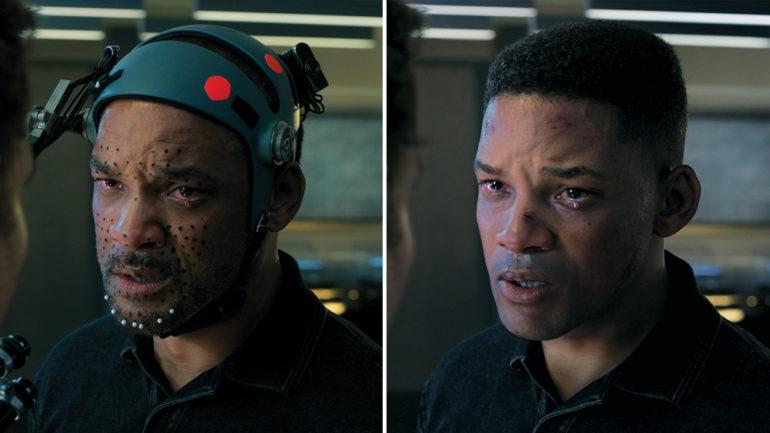How the ‘Gemini Man’ VFX Team Digitally Created a Younger Version of Will Smith
By Karen Idelson
LOS ANGELES (Variety.com) – More human than human — yes, that’s a “Blade Runner” reference — yet it sounds like an unattainable standard when it comes to creating believable, photorealistic, digital human characters. But the visual effects team on Ang Lee’s “Gemini Man” set its sights on something even more difficult: creating a digital version of young Will Smith that was just as human as the actor, with all the quirks, visual idiosyncrasies and subtleties that make a thespian believable on the big screen.
Adding to the degree of difficulty: Lee decided to shoot the movie in a high-frame-rate format — as he did for “Billy Lynn’s Long Halftime Walk” — a conceit that’s less forgiving than other formats for VFX because there’s almost no motion blur, which can help hide some of the trickery.
Pulling off the task requires extreme attention to a wide range of variables. “It’s what I call a symphony of things that work together to convince us that we’re looking at a human,” says Bill Westenhofer, the movie’s VFX supervisor and an Oscar winner for his contributions to Lee’s “The Life of Pi.” “It’s all the micro-expressions that someone makes when you’re talking to them; it’s the melanin in the skin and how the light interacts with the skin.”
Smith worked on set with an actor named Victor Hugo, playing off him, and the VFX team spent a great deal of time with the footage even before the effects artists and animators came in to do their thing, says Westenhofer. Smith performed both roles, with Weta de-aging the younger character using effects and digital mapping.
“Ultimately, what drives this is giving two incredible performances as the older assassin and as Junior,” says Westenhofer. “You can’t fake what Will Smith gives you in his performances — all the emotion and things that draw you into the story.”
Before shooting with Smith, an experienced team of VFX artists at Weta Digital started gathering all the reference material on the actor it could find and built a digital version of him, down to the pores. The standard of accuracy the crew had to meet was high — millions had watched young Smith on “The Fresh Prince of Bel-Air,” after all, and any missteps would be immediately obvious.
“It turns out that you can come by a likeness of a character very quickly, but holding on to that likeness under all circumstances is extremely difficult,” says Weta VFX supervisor Guy Williams. “Once the face starts to move and interact with the environment and with light, it’s pretty easy for things to go off the tracks.”
Williams said the crew was confident, drawing on its experience working with expressions and faces on several films, as well as the pipeline Weta established to create digital characters for the “Planet of the Apes” series. “But you have to consider when you take on a project like this that you have to build the system and have the crew. We’d already built the system, but it still took a team of 500 well-trained artists about two years to help bring Junior to life.”

